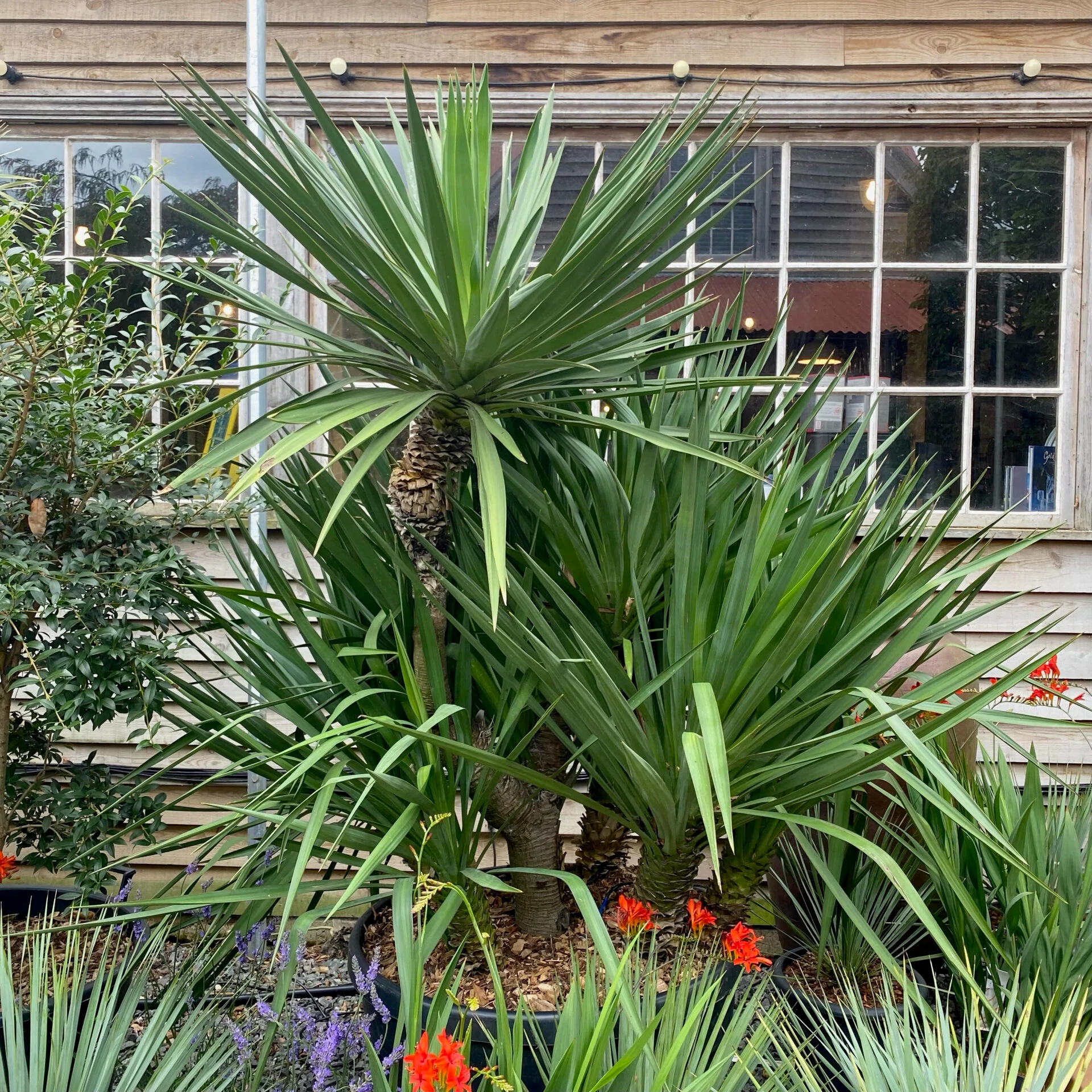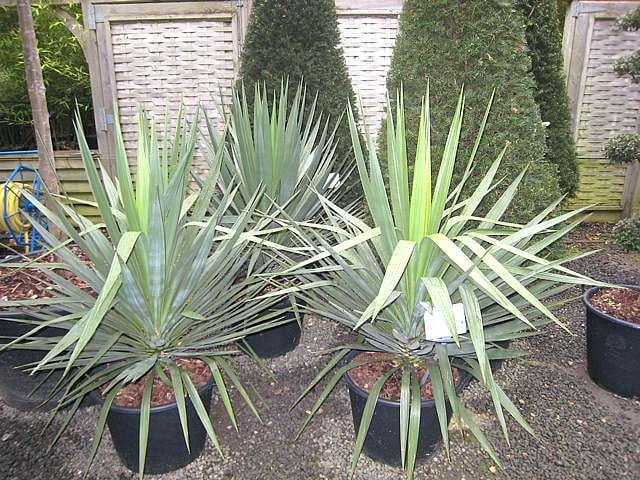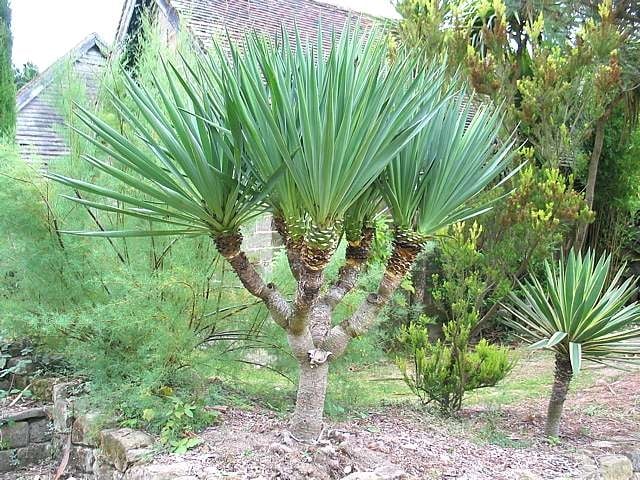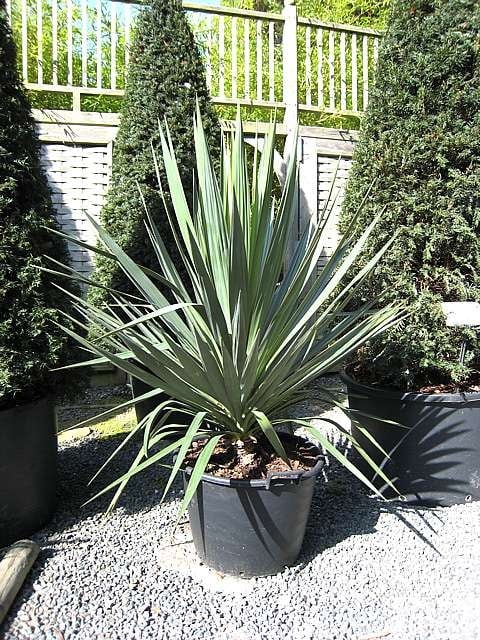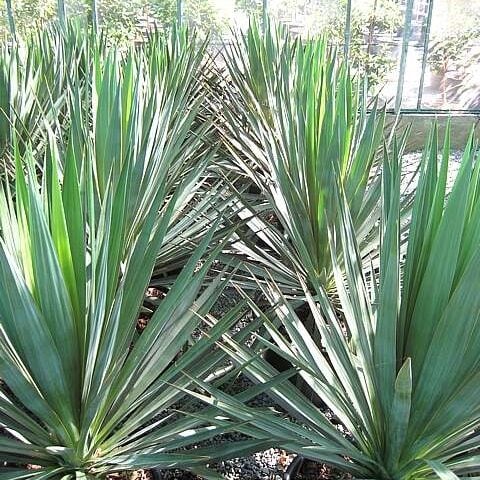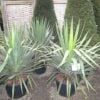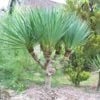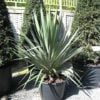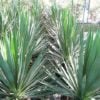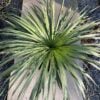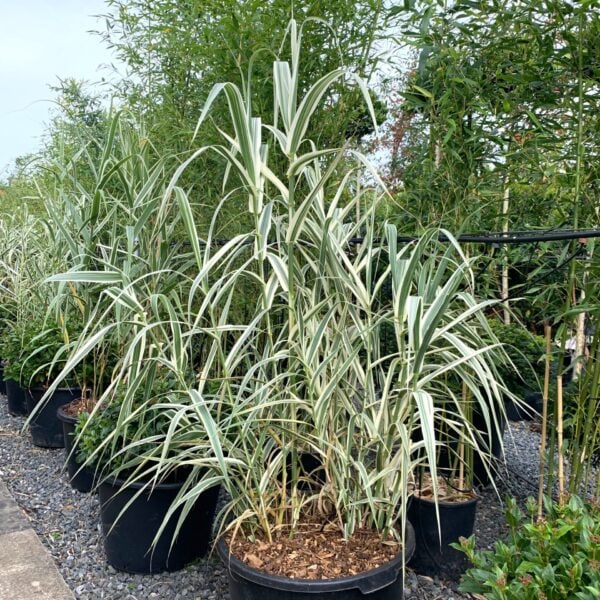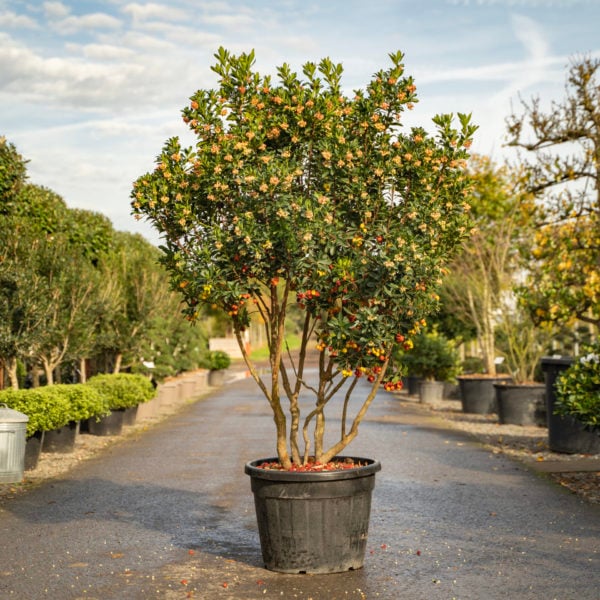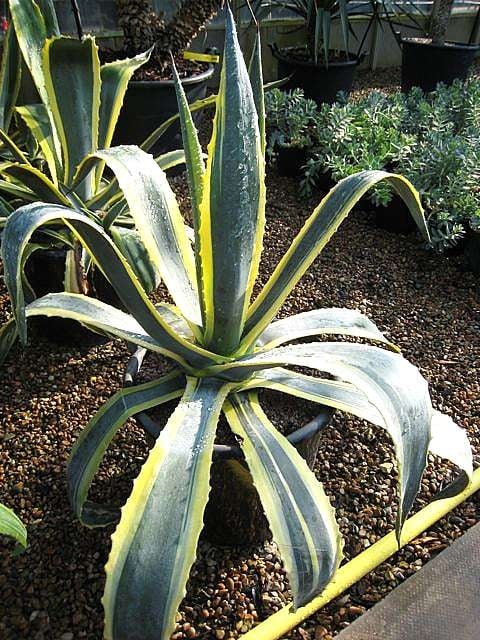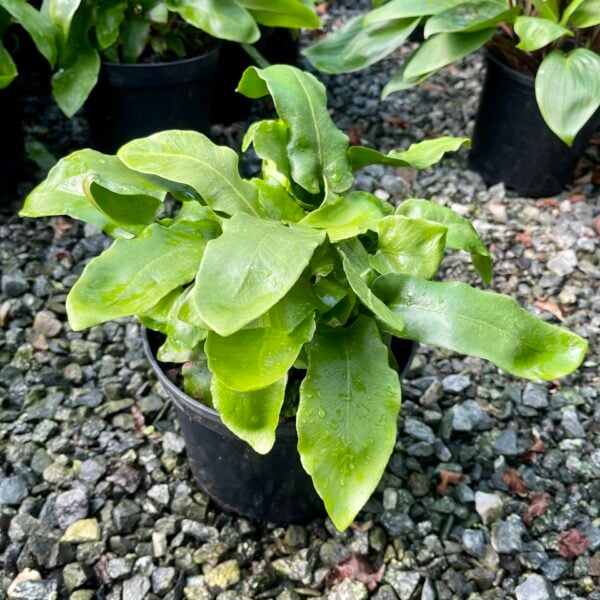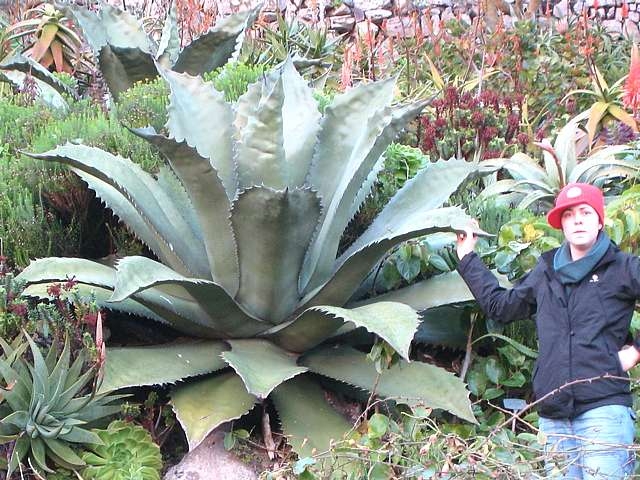Yucca recurva
Another classic Victorian favourite. Trunk forming, but with graceful recurved (bending) leaves. Huge white flower spikes, as with all the Yuccas. To 5ft x 3ft across. Please contact us for other stock availability and sizes.

Hardiness level Green
An elegant favourite thought to be a form of Yucca gloriosa from the Carolinas and often wrongly named Yucca gloriosa. The outer, older leaves bend elegantly under their own weight forming a top like a smaller but butcher (more butch, that is) Cordyline. It forms a trunk and has all the normal pitfalls and benefits of all the yuccas but this plant is particularly easy to please - being happy in shade and quite wet clay soil. Removing old leaves is best done by tearing. This might require a pair of gloves and leaves a nice smooth trunk. Gertrude Jekyll was a prominent garden designer around the turn of the century working with the much younger architect Edwin Lutyens in his numerous Surrey houses and gardens. She is sometimes credited with inventing the herbaceous border but - rather surprisingly - she was devoted to using these same Yucca recurvas either end of her famous borders. We propagate these in our lab by micropropagation as seed is unavailable and division is too slow.
In common with all the yuccas we grow : remove old leaves (pull off or cut off, depending on your proclivities), use fungicide on them if they get spotty (this will stop the spot spreading - not make the spots go away), they have large white flower spikes in late summer, they branch after flowering, remove the flower spike as soon as the flowers fade. Any reasonably well drained soil - they're not desert plants and are not as fussy as people often imagine.
Severe frost (-4°c or below) will give the leaves a glazed look. It can look terminal but it's not. They recover wonderfully well as soon as the temperature rises.
We propagate these in our lab by micropropagation as seed is unavailable and division is too slow.
Some notes about spotty leaves : some plants (this is one) are susceptible to getting black spots on their leaves. This is the growth of fungal organisms that land on the leaf and grow. They do no harm to the plant but they look unsightly. This spottiness only seems to afflict a small number of plants that have spent the last few million years evolving in a dry climate where airborne fungal spores are rare and therefore the plants have never had a reason to develop a way to combat the situation. The technique to combat these spots is a combination of fungicide (any will do - particularly anything recommended for roses) used when the spots appear and merely removing (and burning preferably) affected leaves. Leaf removal removes the source of infection, fungicide kills the spores (but doesn't make the spots go away).
N.B. When clipping several plants with the same tool, have a bucket containing a 5% bleach solution and swish your blades around for 30 seconds between plants to sterilise them. This will help avoid the chance of cross contamination of disease.
As with all woody plants, plant high, exposing as much of the taper at the base of the trunk as possible. Allowing soil to accumulate round the base of a tree can be fatal. Keep very well watered when first planted.
Additional Information |
|
|---|---|
| Soil Type | |
| Light | |
| Plant Type | |
| Continent of Origin | |
| Specialist Plants | |
| Features | |
| Situation | Coastal, Conservatories, Exposed (To wind and sun), Mild City Gardens, Plants for Pots, Sheltered Garden |
| Flower Colour | |
| Hardiness | |





